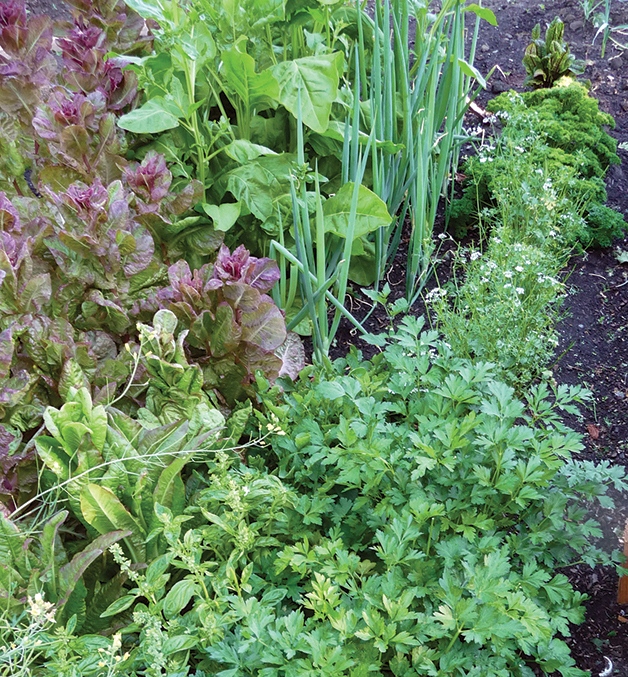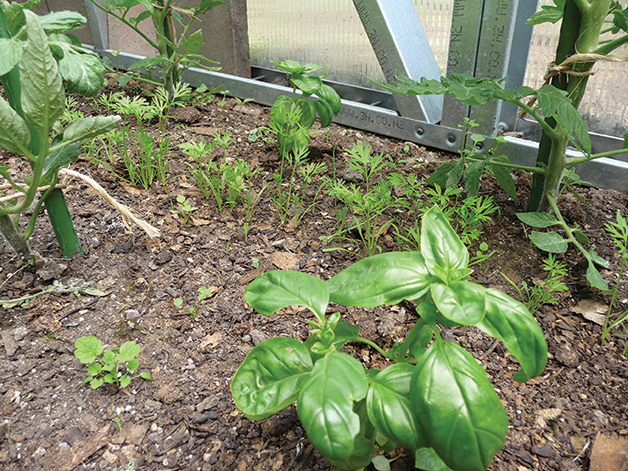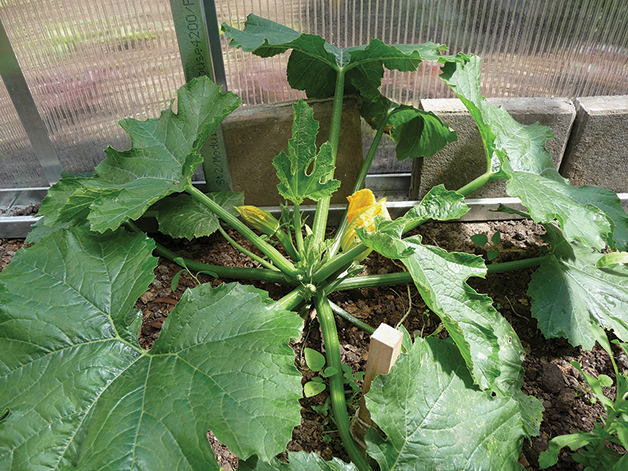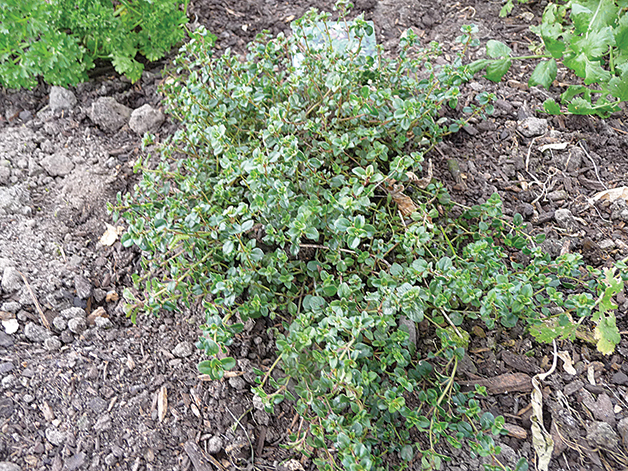Hei Mahi MāraHerbs for good health
Sept 30, 2016

A beginner’s guide to growing organic vegetables
Nā Tremane Barr
 This is the first spring since September 2010 where nothing needs to be done to my māra in order to recover from the effects of the earthquakes of 2010–2011, and the subsequent house rebuild. It has taken six long years of blood, sweat and tears (and more than a bit of ranting and raving about EQC) to get to the point where I have the luxury of just focusing on the simple tasks of getting my māra organised, fertilised, and planted for spring.
This is the first spring since September 2010 where nothing needs to be done to my māra in order to recover from the effects of the earthquakes of 2010–2011, and the subsequent house rebuild. It has taken six long years of blood, sweat and tears (and more than a bit of ranting and raving about EQC) to get to the point where I have the luxury of just focusing on the simple tasks of getting my māra organised, fertilised, and planted for spring.
For this article I thought it would be a good idea to focus on herbs that are incredibly beneficial for your health. I am a recent convert to herbs after years of having a very restricted plain diet. However, as I am not dying of cancer this means that I can eat a much broader range of foods than I have been able to since being diagnosed with terminal cancer in July 2012 (not very “terminal” after all, but I will get around to explaining my recovery in detail in my forthcoming book sometime next year). So what follows is a list of my favourite herbs, ideas on how to grow them, and their potential beneficial health properties.
For this article I thought it would be a good idea to focus on herbs that are incredibly beneficial for your health.

A selection of herbs growing outdoors.
Basil
Basil is a must-have herb for the kitchen, and is one of the easier herbs to grow in soil or in a pot. Sixty varieties of basil have been identified, with three main types: sweet, purple, and bush, each having a subtle difference in taste. They grow up to 40cm in height, and need to be planted 20cm apart. They can be grown from seed and can last a whole season if looked after. Snip off budding heads going to flower to keep the plant full, and a new branch with leaves will appear. Basil contains an impressive list of nutrients from being high in vitamins A, K, and C; along with iron, calcium, manganese, magnesium, potassium, and DNA-protecting anti-inflammatory flavonoids. Basil tastes great with tomatoes, and combined with ingredients such as nuts and other herbs to make pesto.
Parsley
Parsley is a biennial herb, which means it only flowers in the second year. It has two basic types: one with curly, crinkly leaves, and the Italian flat leaf parsley. It can be difficult to start from seed, taking up to 3-4 weeks to sprout, so I usually buy parsley seedlings and plant them 15-20cm apart. Parsley prefers fertile soil and dislikes dry soil.
Parsley is nutritionally impressive, with high levels of vitamins K, A, and C (3 times more than in oranges). Parsley is also high in minerals like iron (twice as much as spinach), copper, and manganese. It also contains one of the highest antioxidant levels found in herbs, helping to purify the blood and detoxify the body.

Basil and carrots in tunnelhouse.
Oregano
Oregano has been called an essential herb for the kitchen as it is the foundation for Mediterranean cuisine, particularly for flavouring tomato-based dishes. As a perennial it is easy to grow, whether from seed, or from small seedlings. It matures into a 30–40cm tall bush with attractive grey-green leaves. It needs full sun and likes its soil kept moist. Oregano is an excellent source of fibre, vitamins A, C, E, K, and B6, folate, iron, magnesium, calcium, potassium, manganese, and copper. Oregano has one of the highest antioxidant activity ratings, with more than 42 times the antioxidant level found in apples.
Chives
Chives are a fragrant evergreen herb with a mild, pleasant, onion-garlic flavour. Beginner gardeners find chives easy to grow. Chives thrive in full sun and rich, moist soil, although they’ll tolerate partial sun and other soil types and still produce generously. Each spring’s chive crop is generally double the last, so thinning is necessary to keep it tidy and productive.
Chives are an excellent source of vitamins K, A, and flavonoid antioxidants like zeaxanthin and lutein that help protect against lung and mouth cancers. Chives are also high in fibre, folate, calcium, iron, magnesium, potassium, copper, manganese, thiamine, niacin, pyridoxine, pantothenic acid, phosphorus, riboflavin and zinc; as well as antioxidants that kill free radicals.

Zucchini in tunnelhouse.
Thyme
Thyme is a perennial from the mint family of plants. It is a small, attractive herb with a plethora of small white, pink, or lilac flowers. There are more than 350 known thyme species, with a variety of forms from bushy to low-growing and leaves varying in colour from deep to paler green shades, some with touches of olive, silver, or bronze. Common thyme (Thymus vulgaris) or lemon thyme (T. citriodorus) are the most popular varieties used for cooking. Thyme is very easy to grow, especially in full sunshine, even in rocky dry soil or containers. It grows 20–30cm tall, and can be grown from seed spaced 30cm apart. The flowers are known for their nectar, which attracts bees into the garden.
Thyme is an excellent source of vitamins C and B6, as well as fibre, riboflavin, iron, copper, manganese, calcium, phosphorus, potassium, and zinc. The combination of vitamins and minerals, plus rosmarinic and ursolic acids, which are powerful terpenoids, are known to help prevent cancer.

Thyme.
Coriander
Coriander (or cilantro as it is sometimes known) is a member of the carrot family that has a pleasant aroma, and is commonly used raw or dried for culinary applications. It is an absolute favourite of mine for flavouring salad dishes. It is an annual that grows to 40cm in height and can be grown from seed spaced at 20cm apart. It prefers full sun, but does have a tendency to go to seed in the heat of summer. I let some of them do this, and then spread the seeds, which easily sprout and grow. The leaves are a treasure trove of beneficial flavonoids, polyphenols, and phenolic acids, including antioxidant and anti-inflammatory kaempferol and quercetin. Kaempferol may help fight cancer and lower the risk of other chronic diseases including heart disease. The leaves of the plant are also high in vitamins A, K, and C, as well as calcium.
As my recovery from cancer is going well, I have started to occasionally include meat in my diet like fish, chicken, and lamb. Unfortunately, when meat is cooked at high temperatures this can create heterocyclic amines (HCAs), which are linked to cancer. By adding herbs (and spices) like coriander and the others mentioned in this article to the meat as part of a marinade, dressing, or spice rub, it can significantly reduce the formation of HCAs during the cooking process. It has also been found that coriander helps decrease the uptake of heavy metals into the body, so is a good complement with kaimoana that might be high in mercury.
Tremane Barr is Ngāi Tahu/Kāti Māhaki ki Makaawhio. He has been gardening organically for more than 20 years. Tremane is currently a Research Fellow based at the Ngāi Tahu Research Centre at the University of Canterbury and is working on the Raumanga Rōnaki Mahinga Kai project.